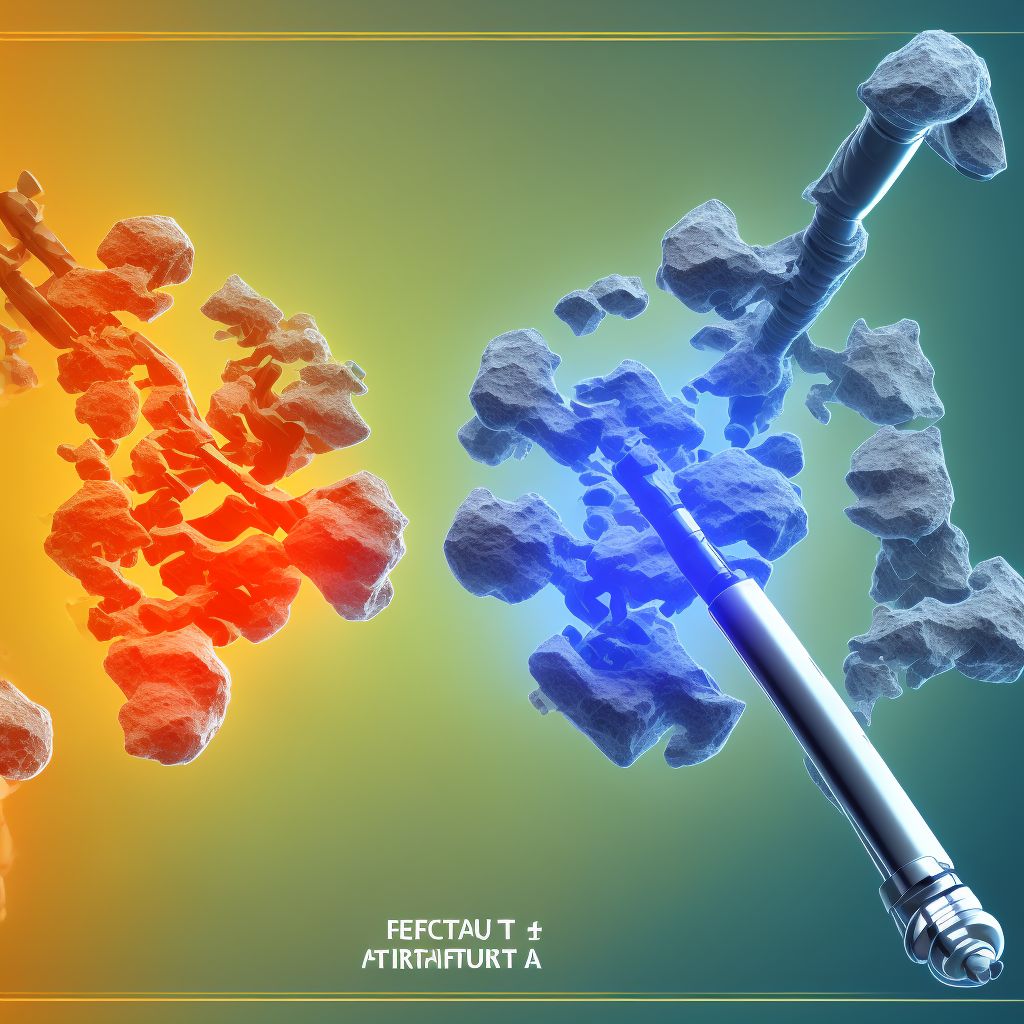
Unspecified fracture of lower end of left tibia, subsequent encounter for open fracture type IIIA, IIIB, or IIIC with routine healing Save
ICD-10 code: S82.302F
Disease category: S82.302: Unspecified fracture of lower end of left tibia
Understanding Unspecified Fracture of the Lower End of Left Tibia
An unspecified fracture of the lower end of the left tibia refers to a break in the shinbone located near the ankle joint. This type of fracture commonly occurs due to traumatic incidents, such as falls, sports injuries, or accidents. The subsequent encounter for an open fracture type IIIA, IIIB, or IIIC with routine healing signifies that the fracture has been treated and is now in the process of healing without complications.
When an open fracture occurs, it means that the broken bone has punctured the skin, increasing the risk of infection. However, with appropriate medical attention and treatment, the fracture can be managed effectively, allowing for routine healing.
- Causes: Unspecified fractures of the lower end of the left tibia are often a result of high-impact accidents or excessive force applied to the leg. These fractures can occur during sports activities, falls from heights, or motor vehicle accidents.
- Symptoms: Common symptoms of an unspecified fracture in this area include severe pain, swelling, bruising, difficulty bearing weight on the affected leg, and visible deformity.
- Diagnosis: A medical professional will typically perform a physical examination, evaluate the patient's medical history, and order imaging tests such as X-rays or CT scans to diagnose the fracture accurately.
- Treatment: While we won't discuss treatment in this article, it's important to note that the primary goal of treatment is to realign the broken bone fragments and stabilize them to facilitate proper healing.
During the subsequent encounter, routine healing refers to the normal progression of the fracture's recovery process. This means that the fracture is healing well without any complications or the need for further medical intervention.
It is crucial to follow the recommended guidelines provided by healthcare professionals to ensure a successful recovery. This may include rest, elevation, pain management, and physical therapy to restore strength and mobility to the affected leg.
In conclusion, an unspecified fracture of the lower end of the left tibia is a common injury that can occur due to various traumatic incidents. However, with proper medical care and treatment, including routine healing, individuals can regain functionality and return to their normal activities over time.
Treatment of Unspecified fracture of lower end of left tibia, subsequent encounter for open fracture type IIIA, IIIB, or IIIC with routine healing:
Treatment Options for Unspecified Fracture of Lower End of Left Tibia
An unspecified fracture of the lower end of the left tibia, subsequent encounter for open fracture type IIIA, IIIB, or IIIC with routine healing can be a challenging condition to manage. However, with the right treatment options, patients can experience successful recovery and regain normal function.